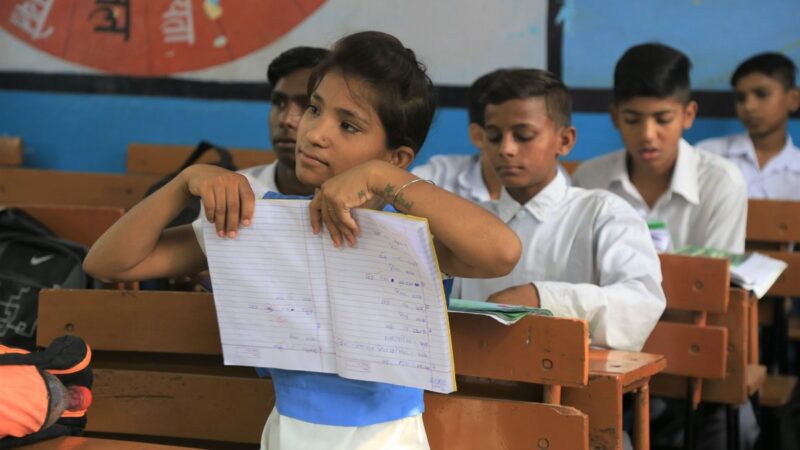India introduces sign language in schools
Panel suggests including Indian Sign Language as a subject in schools

Even as according to official figures just 5% of hearing-impaired children get basic schooling in India, the government’s decision to include sign language as part of the school curriculum has been hailed by experts.
According to the 2011 census, there were 5.07 million hearing-impaired students in India, and out of them, just 1% had the access to quality education.
On eve of the International Day of Sign Languages being observed on Thursday, experts say the government’s decision to introduce Indian Sign Language (ISL) in the school curriculum will improve accessibility and create awareness.
As part of a new national education policy announced in July, the government has designated the ISL a subject now.
“Students can opt to study this. It will promote Indian Sign Language and will help differently-abled people,” said Prime Minister Narendra Modi, while unveiling the new policy.
He also released an ISL dictionary of 10,000 words.
Experts say the move would give a boost to inclusive education besides empowering special needs children to convey their thoughts ably.
“For a long time, sign languages of persons with hearing disability were not considered a real language. However, with research in the field of linguistics, it has been established that sign language of the persons with a hearing disability are complex grammatical languages which developed naturally when people with hearing disability came together,” said Sharita Sharma, assistant professor in the Department of Linguistics at the Central University of Rajasthan.
Speaking to Anadolu Agency, Sharma, who was also a member of the committee that devised the new education policy, said the sign languages have their grammar and are highly creative.
“Anything communicated in spoken language can be communicated in sign language also. They can be used to teach mathematics, written language, science, and any technical subject. Sign languages all around the world are not the same as there is no universal sign language,” she said.
142 sign languages across globe
Almost 142 different sign languages have been studied around the world. These include Indian Sign Language (ISL), American Sign Language (ASL), British Sign Language (BSL) among others.
Gyanendra Purohit, who runs an NGO Anand Service Society (ASS) for deaf and speech impaired children in central India’s Indore district, said that the system so far has been to provide only oral education to deaf children.
He said that in absence of sign language, and because these children were provided only oral education, they could not develop cognitive writing ability.
Sharma said that the formative years of a child are crucial for the development of cognitive and linguistic skills. She expects that with ISL now part of the curriculum, the deaf children will also get a strong foundation.
“It is therefore imperative during these years that children can access teaching-learning resources as per their learning needs. Before the above efforts, deaf children, teachers, or the deaf parents alike were at a disadvantage as no teaching-learning resources were available in ISL,” she said.
How to submit an Op-Ed: Libyan Express accepts opinion articles on a wide range of topics. Submissions may be sent to oped@libyanexpress.com. Please include ‘Op-Ed’ in the subject line.
- HoR speaker, UN envoy meet on unity push - January 21, 2025
- New Oil Well Bolsters Libya’s Production Capacity - January 21, 2025
- Turkish TPAO Poised to Invest ‘Billions’ in Libya - January 20, 2025


